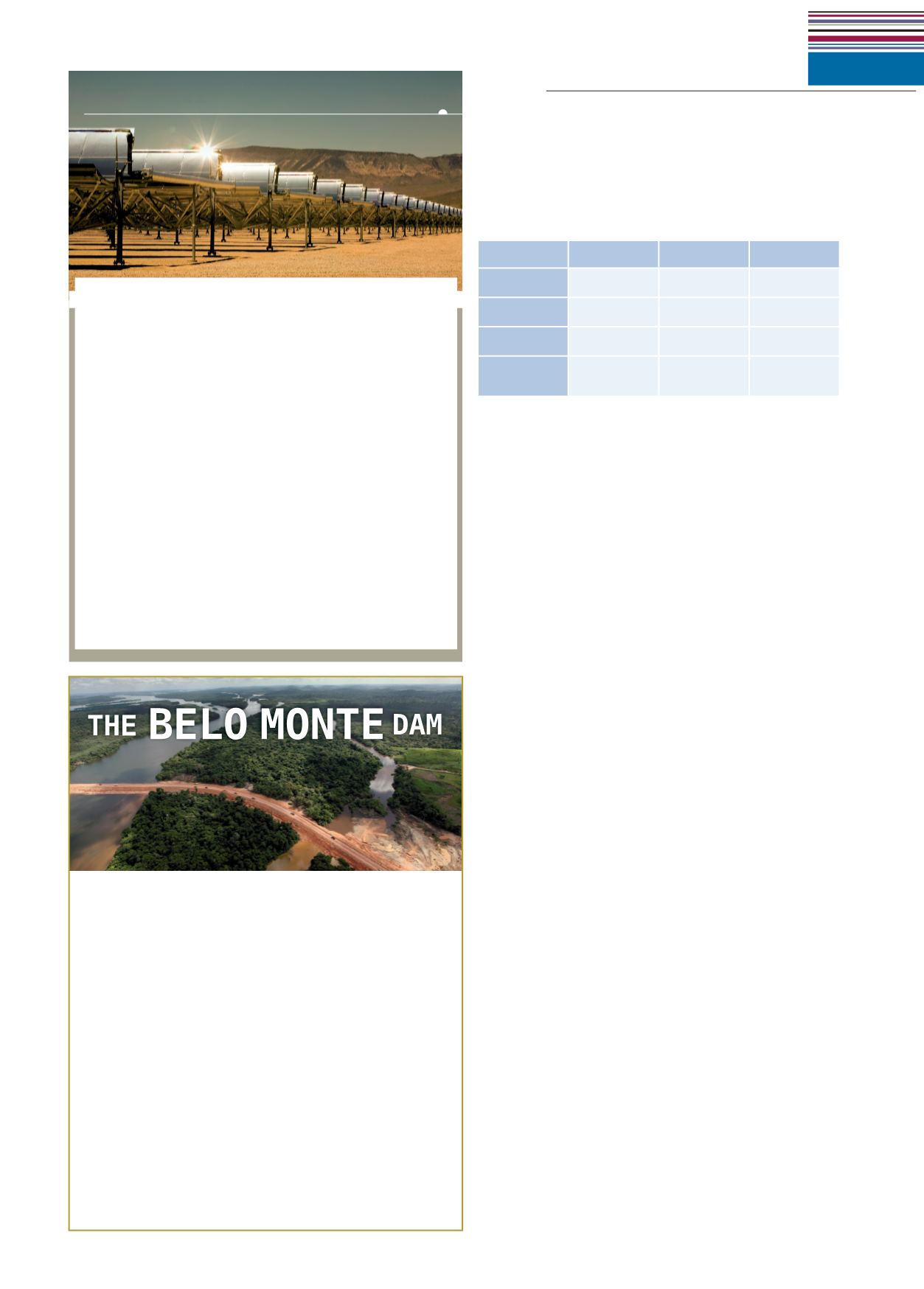
SUPERSTRUCTURES
9.3
91
READING
6
a
Scan the three texts and note down all the
countries mentioned. Why is each country mentioned?
6
b
Read the three texts again and complete as much
of the table as you can.
Harbour
Solar farm
Dam
height
cost
length
area
covered
6
c
Read the texts again and answer the questions.
1
What will people see on the harbour’s promenade?
2
Where will people be able to eat at the harbour?
3
Which landmarks are near the harbour?
4
What are the advantages of the Sahara solar panels?
5
Why will the solar panels in North Africa generate
more electricity than panels in Europe?
6
Where is the proposed Belo Monte dam?
7
Why does the government want to build the dam?
7
Identifying problems
Work in pairs to discuss the
following.
1
What problems do the three texts mention?
2
Which problem do you think will be
a
most serious
b
most difficult to solve?
3
Can you think of other problems that might arise in
the three projects?
SPEAKING
8
a
You are going to hold a debate on the following
motion.
Spending billions on superstructures cannot be justified
when people are starving.
Divide into two groups, one for and one against
the motion.
Group A (for the motion):
Turn to page 157 and prepare
your arguments.
Group B (against the motion):
Turn to page 163 and
prepare your arguments.
8
b
When you have prepared your arguments, debate
the motion as a class.
It is hoped that a huge solar and windfarm project in the
Sahara desert, including countries in North Africa and Arabia,
may provide 15% of Europe’s electricity by 2050 and help
solve climate change problems. Huge farms of solar panels
in the Sahara will provide clean electricity. As sunlight is more
intense there, the solar panels in North Africa will generate up
to three times the electricity compared with panels in Europe.
The ambitious scheme led by Germany to build a €45 bn
supergrid will start in Morocco, probably near the desert city
of Ouarzazate. The Moroccan solar farm will cover 12 square
kilometres. Tunisia and Algeria will probably be the next
countries as they are close to Europe. Libya, Egypt, Syria and
Saudi Arabia may join the network later.
The panels have metal cradles made in Egypt and glass
troughs made in Germany. Scientists have wondered how the
troughs will perform in very bad weather. However, there is
usually only one sandstorm a year. The main challenge will be
keeping the panels clean due to the dusty conditions. They
need to be cleaned daily which takes up a lot of local water.
SAHARA SOLAR FARM
The Brazilian government is planning to build the Belo
Monte Dam on the Xingu river in the Amazon.
The hydro-
electric dam will be the third largest in the world behind
the Three Gorges Dam in China and the Itaipu Dam which
is jointly owned by Brazil and Paraguay. The Belo Monte
dam will be 90 metres high, 3,545 metres long and will cost
around US$ 18.5 bn.
It is estimated that the dam will produce 11,000 megawatts of
electricity, which would help Brazil depend less on fossil fuels
like oil. The government also wants to help the country’s
economy with large scale projects like this one, and others
like new road systems.
However, the effects of the dam may not all be positive and
the project has been heavily criticised by environmentalists.
The dam will destroy vast areas of land, flooding 500 square
kilometres along the Xingu and forcing more than 16,000
people to find new homes. Campaigners are particularly
worried about the future of local tribes in the area, whose
lives totally depend on the forest and river.


